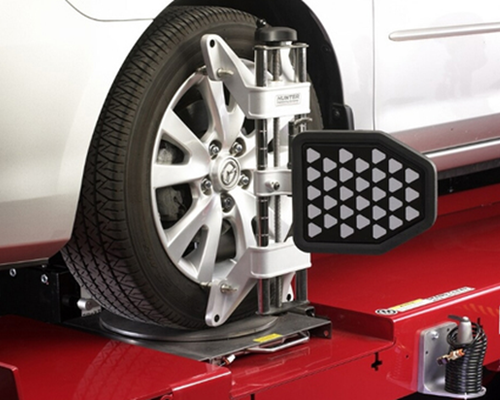
When it comes to selecting a wheel alignment machine for your workshop, making the right choice is crucial. With various options available in the market, it’s essential to consider several factors to ensure that you invest in a machine that meets your needs and offers the best value. In this guide, we’ll explore the key steps to determining the right wheel alignment machine for sale.
Importance of Choosing the Right Wheel Alignment Machine
A wheel alignment machine is a significant investment for any automotive workshop, impacting the accuracy and efficiency of alignment services. Choosing the right machine ensures precise alignment results, enhances customer satisfaction, and improves the overall productivity of your workshop. Therefore, it’s essential to approach the selection process thoughtfully and systematically.
Assessing Your Workshop’s Needs
The first step in determining the right wheel alignment machine is to assess your workshop’s specific needs and requirements. Consider factors such as the volume of alignment services you perform, the types of vehicles you service, and the available space in your workshop. Are you primarily dealing with passenger cars, trucks, or both? Do you require a machine with advanced features for specialty alignment tasks? Understanding your workshop’s needs will help narrow down your options and focus on machines that best suit your requirements.
Evaluating Alignment Machine Types
Wheel alignment machines come in various types, each with its own set of features and capabilities. The three primary types of alignment machines are:
Imaging Alignment Machines:
These machines use cameras and sensors to measure wheel alignment angles accurately. They offer advanced features such as 3D imaging technology and automatic vehicle identification.
Laser Alignment Machines:
Laser alignment machines use laser beams to measure wheel alignment angles. They are known for their simplicity and ease of use, making them ideal for smaller workshops or those with limited technical expertise.
Sensor Alignment Machines:
Sensor alignment machines utilize sensors attached to each wheel to measure alignment angles. They are cost-effective and offer reliable performance for basic alignment tasks.
Evaluate the pros and cons of each type of alignment machine based on your workshop’s needs and budget.
Considering Features and Capabilities
When selecting a wheel alignment machine, consider the features and capabilities that are most important to your workshop. Some key features to look for include:
Alignment Accuracy: Ensure that the machine offers precise alignment measurements to meet industry standards and customer expectations.
Compatibility: Choose a machine that is compatible with a wide range of vehicle makes and models to maximize versatility.
Ease of Use: Look for a machine with a user-friendly interface and intuitive controls to minimize training time and operator errors.
Data Management: Consider machines with advanced data management capabilities, such as storage of customer vehicle information and alignment history.
Support and Training: Select a machine from a reputable manufacturer that offers comprehensive support and training to ensure that your technicians can operate the machine effectively.
Comparing Costs and Return on Investment
Finally, consider the cost of the wheel alignment machine and its potential return on investment for your workshop. While it’s essential to stay within your budget, it’s equally important to consider the long-term value and benefits offered by the machine. A higher initial investment may be justified if the machine offers advanced features, greater accuracy, and durability, leading to increased productivity and customer satisfaction over time.
Conclusion
Choosing the right wheel alignment machine for sale requires careful consideration of your workshop’s needs, evaluation of different types of machines, consideration of features and capabilities, comparison of costs and return on investment. By following these steps and conducting thorough research, you can make an informed decision that aligns with your workshop’s goals and objectives. Invest in the right wheel alignment machine, and ensure precise alignment results, improved efficiency, and customer satisfaction in your workshop.
FAQs
How often should wheel alignment machines be calibrated?
Wheel alignment machines should typically be calibrated annually or whenever there are signs of inaccurate readings. Regular calibration ensures precise alignment measurements and maintains the machine’s accuracy.
Are wheel alignment machines compatible with all vehicle types?
Most modern wheel alignment machines are designed to accommodate a wide range of vehicle makes and models, including passenger cars, trucks, and SUVs. However, it’s essential to check compatibility with specific vehicle types before purchasing.
Can technicians with limited experience operate wheel alignment machines?
Many wheel alignment machines feature user-friendly interfaces and intuitive controls, making them suitable for technicians with varying levels of experience. However, comprehensive training is recommended to ensure proper operation and accurate alignment results.